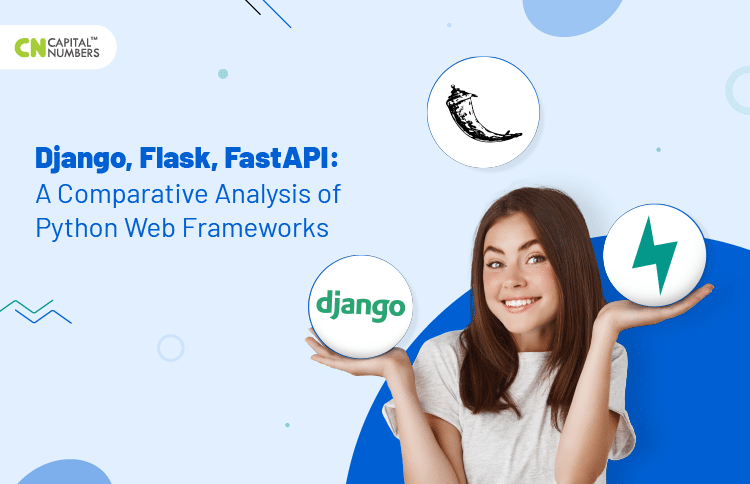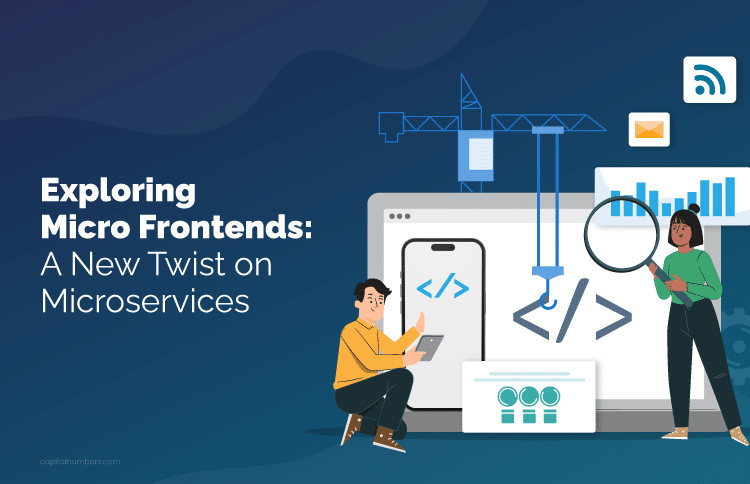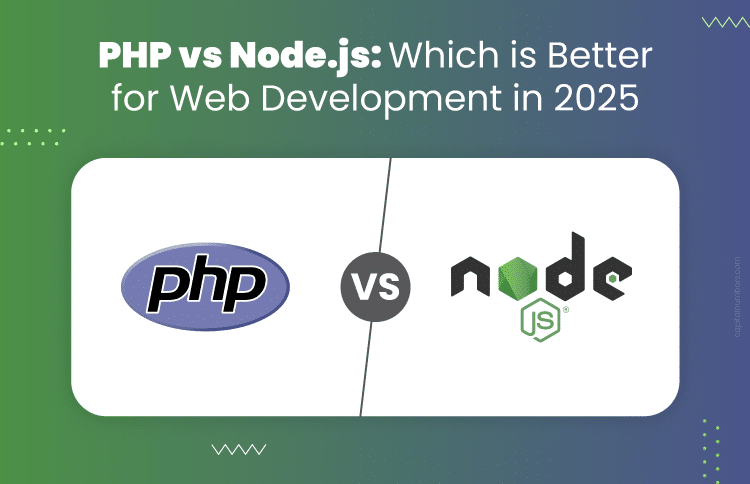Django, Flask, FastAPI: A Comparative Analysis of Python Web Frameworks
Table of Contents
In the ever-evolving landscape of web development, choosing the right Python web framework can be a pivotal decision for the success of your project. With options like Django, Flask, and FastAPI, each catering to different needs and scenarios, making the optimal choice becomes crucial. Whether you’re gearing up to launch a feature-rich content management system, a nimble microservice, or a high-performance API, understanding the strengths and intricacies of these frameworks is essential.
In this comparative analysis, we embark on a journey to explore these Python web frameworks, uncovering their strengths, use cases, and considerations. Whether you’re looking to hire an expert Django developer or have decided to develop your next web application using Flask, this comparative analysis will assist you in making an informed decision.
Overview of Django
Django is a high-level Python web framework renowned for its robustness and efficiency in web application development. Originally developed by web developers at the Lawrence Journal-World newspaper in 2003 and released as open-source, Django quickly gained popularity for its “batteries-included” philosophy, which means it comes with a wide range of built-in features and tools that simplify the development process. This framework follows the Model-View-Controller (MVC) architectural pattern, using Models to represent the data, Views to handle the user interface, and Controllers (in Django, called URL handlers) to manage the application’s logic. Moreover, developers have access to numerous third-party Django packages within the Django ecosystem, enabling them to integrate additional functionality into their projects easily.
Django’s Features
- ORM (Object-Relational Mapping): One of Django’s standout features is its ORM, which allows developers to define data models using Python classes. This abstracts the database interaction, making it database-agnostic and significantly reducing the amount of SQL code developers need to write.
- Admin Panel: Django provides an automatic admin panel that allows developers and administrators to manage site content, users, and data models with minimal effort. This feature accelerates the development process and is especially useful for content-heavy websites.
- Authentication and Authorization: Django has built-in user authentication and authorization systems, making it easy to handle user management, login, and permissions.
- URL Routing: It includes a URL routing system that helps developers define how URLs map to views, making it easy to create clean and organized URL structures.
- Security: Django offers several security features, including protection against common web vulnerabilities like SQL injection, cross-site scripting (XSS), and cross-site request forgery (CSRF).
- Template Engine: Django provides a template engine for creating dynamic HTML pages, making it easier to separate the presentation layer from the application logic.
Pros
- Rapid Development: Django’s “batteries-included” approach and built-in features like the admin panel allow for the fast development of complex applications.
- Scalability: Django is suitable for small and large projects and can scale effectively due to its modular architecture.
- Community and Documentation: Django has a large and active community, which means ample resources, libraries, and third-party packages are available. Extensive documentation makes it easy for developers to get started and find answers to their questions.
- Security: Django takes security seriously and comes with built-in features to help protect your application against common web vulnerabilities.
Cons
- Learning Curve: Django’s extensive feature set and conventions can lead to a steeper learning curve for beginners than micro-frameworks like Flask.
- Overhead: Django’s comprehensive nature may introduce unnecessary complexity for small, simple projects.
Use cases
- Content Management Systems (CMS): Django’s admin panel makes it an excellent choice for building content-heavy websites or applications where administrators need an intuitive interface to manage content.
- E-commerce Platforms: Django’s robustness, security features, and scalability make it a popular choice for e-commerce sites that require complex product catalogs, user accounts, and payment processing.
- Social Networks: Django can be used to build social networking platforms for its user authentication, data modeling, and customizable user profiles.
- Data-Driven Applications: For applications that require extensive database operations and data manipulation, Django’s ORM simplifies database interaction and management.
- Any Project Requiring Rapid Development: Django is ideal for projects with tight deadlines that demand quick development and scalability without sacrificing security and maintainability.
Overview of Flask
Flask is a lightweight, micro web framework for Python created by Armin Ronacher. It offers a simple and subtle approach to web development, allowing developers to build web applications with minimal overhead. Flask follows the WSGI (Web Server Gateway Interface) standard and provides essential components for routing, request handling, and template rendering, allowing developers to choose their tools and libraries.
Flask’s Features
- Routing: Flask provides a straightforward mechanism for defining URL routes, allowing developers to map URLs to specific functions, making it easy to define how different parts of your application respond to requests.
- Request Handling: It simplifies handling HTTP requests, allowing developers to access request parameters, headers, and data with ease.
- Template Rendering: Flask separates the presentation layer from the application logic.
- Session Management: Flask supports session management, making it possible to manage user sessions and store session-specific data.
- Extensions: While Flask is minimalistic, it has a rich ecosystem of extensions and libraries that can be added to extend functionality.
Pros
- Simplicity: Flask’s minimalistic design and straightforward API make it easy to learn and understand, making it an excellent choice for beginners and developers who prefer a less opinionated framework.
- Flexibility: Flask provides developers with the freedom to choose components and libraries, allowing them to tailor their applications to specific needs.
- Minimal Overhead: Flask has a small codebase and minimal overhead, resulting in fast performance and efficient resource usage.
- Community Support: Flask has an active community that offers tutorials, documentation, and support for developers.
Cons
- Limited Built-in Features: Flask provides only the essentials, which means developers may need to rely on third-party extensions or libraries for more advanced features.
- Learning Curve for Complex Projects: While Flask is simple to start, more complex projects may require additional planning and structure, which developers must implement themselves.
Use Cases
- Small to Medium-Sized Web Applications: Flask is well-suited for building small to medium-sized web applications where simplicity and rapid development are priorities.
- Prototyping and Proof of Concepts: Developers often use Flask to create prototypes and proof of concept projects due to its quick setup and minimalistic nature.
- RESTful APIs: Flask is an excellent choice for building RESTful APIs because of its lightweight routing and request-handling capabilities.
- Microservices: Flask is commonly used for creating microservices within a larger architecture due to its minimalistic and lightweight design.
- Educational Projects: Flask is popular for educational purposes and as a learning tool for web development due to its simplicity and ease of understanding.
Overview FastAPI
FastAPI is a modern and asynchronous web framework for Python designed to simplify and accelerate the development of web APIs. It combines the productivity and ease of Python with the high performance of asynchronous programming, making it an excellent choice for building scalable and efficient web services. Created by Sebastián Ramírez, FastAPI has gained popularity for its automatic data validation, interactive API documentation, and robust features.
FastAPI’s features
- Asynchronous Support: FastAPI is built on top of Python’s asyncio library, enabling developers to write asynchronous code that efficiently handles concurrent requests and I/O-bound operations.
- Automatic API Documentation: FastAPI automatically generates interactive API documentation based on your code, Python-type hints, and docstrings. This interactive documentation helps developers and users understand how to use the API effectively.
- Type Hints for Data Validation: It leverages Python’s type hinting system to validate request and response data automatically, reducing the chances of data-related errors and making code more reliable.
- Fast Development: With concise and intuitive syntax, FastAPI allows developers to create APIs with minimal code, facilitating rapid development and prototyping.
- Built-in Security Features: FastAPI includes built-in security features to help protect against common web vulnerabilities like SQL injection and cross-site scripting (XSS).
Pros
- High Performance: FastAPI is known for its exceptional performance, asynchronous capabilities, and efficient request handling, making it suitable for projects with demanding performance requirements.
- Automatic Documentation: The automatic generation of interactive API documentation simplifies API testing and usage, saving time and effort in maintaining separate documentation.
- Type Safety: Using type hints enhances code safety and readability, making catching errors in development easier.
- Pythonic Syntax: FastAPI follows Python’s idiomatic style, making it accessible and familiar to Python developers.
- Growing Ecosystem: While not as mature as some older frameworks, FastAPI’s ecosystem of extensions and libraries is expanding, offering more options and support.
Cons
- Learning Curve: Developers new to asynchronous programming may experience a learning curve when adapting to FastAPI’s asynchronous features.
- Maturity: Compared to well-established frameworks like Flask and Django, FastAPI is relatively new, which may lead to occasional changes and updates.
Use Cases
- API Development: FastAPI is particularly well-suited for building APIs for various applications, including mobile apps, web services, and IoT devices, due to its high performance and automatic documentation generation.
- Real-Time Applications: FastAPI’s asynchronous support makes it an excellent choice for real-time applications, such as chat applications, online gaming platforms, and IoT control systems.
- Microservices: Its lightweight and high-performance nature makes FastAPI an ideal choice for developing microservices within a distributed architecture.
- Prototyping: Developers often choose FastAPI for rapid prototyping and proof of concept projects where quick development and efficient performance are essential.
- High-Concurrency Projects: Applications that handle many concurrent requests, such as online marketplaces or social media platforms, can benefit from FastAPI’s asynchronous capabilities.
Django vs. Flask vs. FastAPI: Key Comparison
Here is the comparison of the three frameworks based on the key parameters:
| Feature | Django | Flask | FastAPI |
|---|---|---|---|
| Type of Framework | Full-stack web framework | Micro web framework | Asynchronous web framework |
| Project Size & Complexity | Well-suited for larger projects with complex requirements. | Ideal for small to medium-sized projects with specific needs. | Excellent for building APIs and real-time applications. |
| Built-in Features | Provides a wide range of built-in features and tools. | Offers minimal built-in features, allowing developers to choose components. | Provides essential features and supports third-party extension |
| Performance | Strong performance and scalability with features like ORM and caching. | Excellent performance with low overhead. | Exceptional performance with asynchronous support. |
| Developer Productivity | Enhances productivity with an automatic admin panel, ORM, and other tools. | Promotes rapid development and prototyping. | Offers automatic API documentation generation. |
Database Support
| Offers a powerful ORM for managing databases. Supports multiple databases out of the box. |
Offers database integration but doesn’t include a full-fledged ORM. |
Supports database integration and asynchronous database operations. |
|
| Authentication & Authorization | Provides robust authentication and authorization systems. | Requires developers to implement authentication and authorization logic. | Offers authentication and authorization tools but allows flexibility for custom solutions. |
| Template Engine | Includes a template engine (Django Template Language) for rendering views. | Provides Jinja2 template engine for rendering HTML templates. | Supports Jinja2 for HTML templates and additional formats for API responses. |
| Bootstrapping Tool | Offers built-in CLI for project setup. | Requires manual project structure setup. | Provides CLI for project initialization. |
| Debugger | Includes a built-in debugger. | Supports third-party debugging tools. | Offers integrated debugging capabilities. |
| Security | Has built-in security features to protect against common web vulnerabilities. | Requires developers to implement security measures but allows flexibility. | Provides some built-in security features and supports third-party security libraries. |
| Community Supports | A large and active community with extensive documentation and third-party packages. | An active community with a good selection of extensions and libraries. | A growing community with Python’s ecosystem support. |
| Use Cases | Large web applications, content management systems, and e-commerce sites. | Prototyping, smaller web applications, and microservices. | APIs, real-time applications, and high-concurrency projects.. |
This table provides a comprehensive comparison of Django, Flask, and FastAPI based on various features relevant to web development. Keep in mind that your choice of framework should align with your specific project requirements and development preferences.
You May Also Read: Deciding Between C# and Python: Which Suits Your Project Better?
Final Thoughts
When deciding between Django, Flask, and FastAPI, it’s essential to align your choice with your project’s unique requirements and your team’s expertise. Django suits larger, feature-rich applications, while Flask offers simplicity and flexibility for smaller projects. FastAPI excels in high-performance APIs and real-time applications, particularly for projects with high concurrency needs.
Carefully assess project size, complexity, performance, and your team’s familiarity with asynchronous programming to make an informed decision. Make certain that your chosen framework seamlessly aligns with your project goals, guaranteeing a successful journey in web development.
If you’re seeking expert tech talent in Python web frameworks, consider Capital Numbers. We boast an extensive talent pool and deliver high-quality solutions promptly. Ready to discuss your project? Contact us today!














